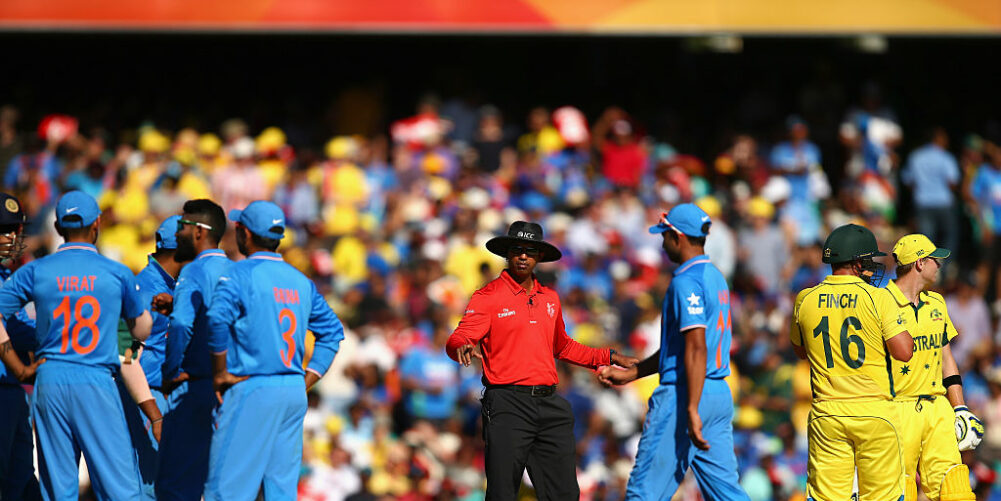(Photo: Getty Images)
By Tim Wigmore
During his esteemed career, Michael Clarke played 57 of his 115 Test matches – almost exactly half – against either England or India.
It was emblematic of something much deeper: the unstinting greed of the ‘Big Three’, in incessantly organised lucrative games against each other, while pushing everyone else to the margins. The same ethos manifested itself in the egregious power grab by the Big Three in the International Cricket Council (ICC) at the start of 2014, hoarding more cash and power for themselves.
Formally, at least, the Big Three is dead: their votes no longer carry more weight than other Full Members within the ICC board, though England and India still receive more ICC cash than the other Test nations. And yet the same spirit, of greed for greed’s sake, and ill-disguised contempt for the other countries in the world, lives on.
Look at next summer’s schedule of matches. It begins with two Test matches against Pakistan in late May and early June: their reward for an enthralling 2-2 draw on these shores in 2016 is to be invited, two years later, for a perfunctory series so flagrantly driven by fulfilling commercial obligations rather than any great cricketing need.
Then it’s up to Edinburgh for a one-day international against Scotland – admirable enough, even if it has been four full years since England deigned to play the Scots, while they played them every two years until 2014.
And then it begins: the summer of Australia and India, the Big Three.
As if playing Australia in the Ashes, a subsequent ODI series and a subsequent T20 tri-series is not enough, Australia will tour for five ODIs and a solitary T20 in June – a year, of course, until they tour England once again, this time for the Ashes.
Let’s put this into perspective. Australia will play England 18 or 19 times from November 23, 2017, to June 27, 2018. In football, England have played their biggest rivals from beyond the UK, Germany, 31 times ever, stretching all the way back to 1930. The cricketing rivalry between Australia and England is being diluted by the cricketing equivalent of quantitive easing, when more money is printed to undermine the value of what already exists in the market.
Following Australia’s brief visit, it’s India’s turn to tour, for three T20s, three ODIs and then a five-Test series. The Tests are being shoehorned into an absurdly brief window – the first Test begins on August 1, and the fifth concludes on September 11 – which will undermine the quality of the cricket on show. It will be an exhibition of injury management and self-preservation more than actual cricketing excellence.
But if India’s great rivals Pakistan think they have it rough, consider the plight of Bangladesh. They squared a Test series with England last year, and last week toppled Australia for the first time – then again, the Test was the first the two nations have played at all since way back in 2006.
Bangladesh have not toured England since 2010, when, it is true, they were a comparatively callow side, unattractive to watch – though Tamim Iqbal scored two blistering centuries in the Tests, and Bangladesh did topple England in an ODI at Bristol, too. Since then, of course, Bangladesh are a team utterly transformed.
But they are not, alas, one deemed worthy of playing a Test on English soil. There will be no series in 2018, and none is planned for 2019, either, when the combination of the Ashes and World Cup in England will leave no room for anything other than an additional one-off Test. And so it will end up being a full decade, perhaps even longer between Bangladesh Tests in England.
A whole generation of Bangladesh cricketers will pass, without being invited to England. The attitude is reminiscent of how England treated Sri Lanka for far too long. Sri Lanka, awarded Test status in 1982, had to wait a full 19 years until being granted more than a solitary Test against England, even though they defeated England in 1993.
If international cricket is to be sustained – especially in light of the bumper new $2.55bn IPL broadcasting deal over five years, which will create even-greater incentives for players to choose domestic T20 leagues over international cricket – it must be nurtured throughout the globe, not merely among the three richest nations.
Yet, for far too long, this has been ignored in favour of short-termism and greed.
So it is far too possible to glimpse a dystopian future: international cricket as essentially one never-ending tri-series between the Big Three, with the other nations barely fielding teams at all outside ICC global events.
It sounds fanciful, yes, but in some ways this isn’t the future at all. It is already here.
And so, later this month, Australia’s pre-Ashes warm-up comprises five ODIs and three T20Is in – yep, you’ve guessed it – India.












